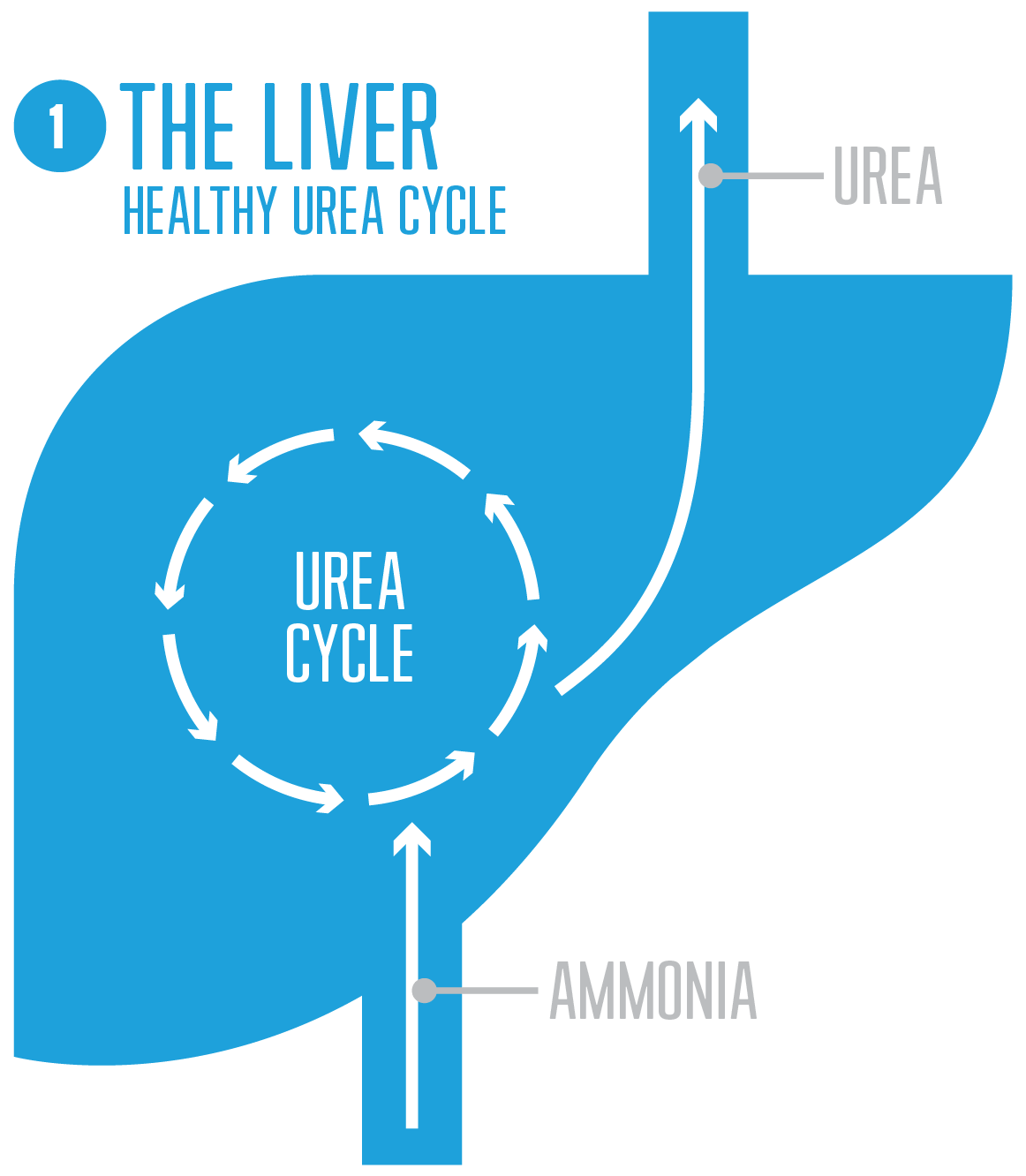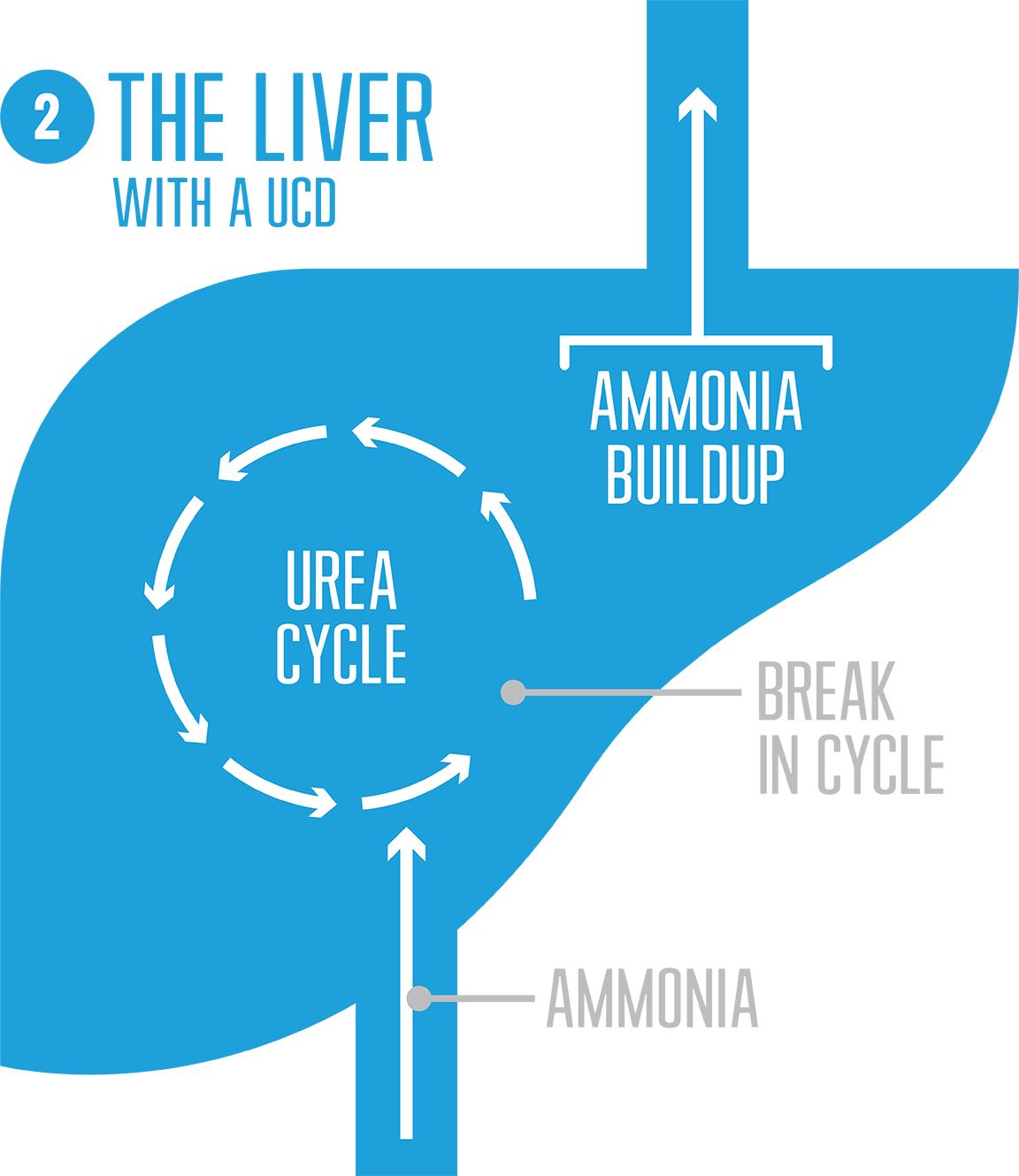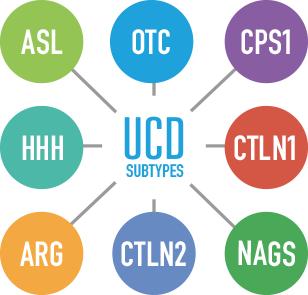UCD 101
A urea cycle disorder (UCD) is an inherited disease. When we eat protein, our bodies break it down into amino acids, which we need to grow and stay healthy. Extra amino acids that our body doesn’t need are turned into a waste product called ammonia. Enzymes in the liver turn the ammonia into urea that so the body can get rid of it through the urine.
In someone with a UCD, the enzyme is missing or is not working correctly. Because of this, ammonia builds up in the blood and can be harmful. Ammonia can travel to the brain and cause memory loss, behavioural changes, coma, seizures, or brain damage. Just because UCDs are rare doesn’t mean there isn’t information to help you or someone you love who is living with a UCD.
UCD symptoms can be subtle and similar to the symptoms of many other conditions, which can lead to misdiagnosis. These symptoms can include headaches, fatigue (feeling tired), confusion, and trouble concentrating. Any level of elevated ammonia, even if it’s not high enough to cause severe symptoms or a hyperammonemic crisis, should be avoided in order to prevent brain damage.
Learn about the long-term effects of a UCD on the body and brain
Long-Term Effects


healthy urea
cycle
Protein in the food you eat is needed for the growth and development of your body.

Our bodies break down the protein we eat into amino acids, which the body needs to grow and stay healthy. The extra protein that our bodies do not need contains nitrogen, which is turned into ammonia.

The ammonia is then removed from the blood, turned into urea, and passed from the body through urine.
urea cycle disorder
When a person has a UCD, the urea cycle can’t change the ammonia into urea as well as it should. The ammonia builds up because the body can’t get rid of it.

Ammonia can reach toxic levels in the blood and can trigger vomiting, confusion, and swelling in the brain.

While UCDs start in your liver, it’s important to remember that the biggest effect that elevated ammonia levels have is on your brain.
![]()
A UCD is a genetic disorder. This means it is caused by a defective gene that can be inherited from one or both parents. UCDs can also be caused by a random genetic mutation. There are different types of UCDs. The most common type of UCD is ornithine transcarbamylase deficiency (OTC). It is typically passed from a mother to her child.

Fortunately, there are options for people with UCDs to help control high levels of ammonia in the body. Options can include a low-protein diet, amino acid supplements, and ammonia-controlling medicines. Because every person’s needs are different, it’s important to talk to your doctor to develop a plan for how you can best manage your ammonia levels.
